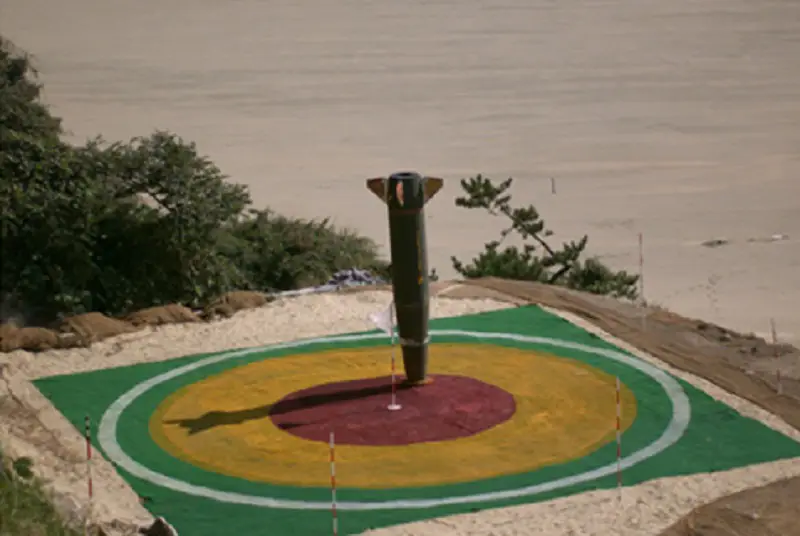South Korea is taking bold steps to enhance its national defense capabilities. A recent announcement by the South Korean Defense Acquisition Program Administration (DAPA) has shed light on the country’s commitment to invest approximately $218 million in the development of an improved bunker-buster missile, the Korean Tactical Surface-to-Surface Missile-II (KTSSM-II). This strategic investment underscores South Korea’s determination to bolster its deterrence capabilities in response to North Korea’s growing missile and nuclear threats. The KTSSM-II project signifies a pivotal moment in South Korea’s defense strategy, with the primary goal of targeting underground enemy installations, such as tunnels and bunkers housing North Korean weapons systems. This development comes as a logical response to the increasing complexity and depth of North Korea’s underground facilities, which have become a major challenge for the South Korean military.
One of the key features of the KTSSM-II is its mobility, as it will be operated on a mobile launcher. This enhances the military’s precision strike capabilities, allowing it to respond swiftly and effectively to emerging threats. The missile’s advanced technology will enable it to strike hidden targets with remarkable accuracy, even within tunnels and bunkers. This capability is particularly crucial in countering North Korea’s long-range artillery pieces concealed deep within underground tunnels. The project is under the supervision of South Korea’s Defense Agency for Defense Development, and it is set to continue until the end of 2027. Major defense companies are actively participating in the production of prototype models, ensuring that the KTSSM-II will be a cutting-edge addition to South Korea’s defense arsenal.

The KTSSM program has a history of success, with the initial development phase occurring from 2014 to 2017 at a cost of $418 million. The missile was successfully test-launched in October 2017, demonstrating its effectiveness and reliability. Subsequently, the South Korean Army announced the creation of a new artillery brigade composed of KTSSM-II missiles and K239 Chunmoo multiple launch rocket systems. This brigade was established with the explicit goal of neutralizing North Korea’s heavily fortified long-range artillery sites near the Korean Demilitarized Zone. The KTSSM missile, also known as “The Ure” or Thunder, was originally conceived as a countermeasure against North Korea’s conventional artillery, following the Bombardment of Yeonpyong Island. Its Block 1 version, designed for fixed launcher platforms, was developed in 2019 through a collaborative effort led by the Agency for Defense Development (ADD) and Hanwha Group. Currently, work is underway to create an improved Block 2 version that can operate on various transporter erector launcher (TEL) platforms.
The KTSSM has earned the nickname “artillery killer” for its remarkable capabilities. Four missiles can be launched almost simultaneously from a fixed pad, with a range of 120 kilometers. The precision of the Ure is striking, with GPS guidance systems ensuring accuracy within a two-meter radius. Furthermore, the missile is equipped with a shaped thermal warhead, capable of penetrating bunkers and hardened targets several meters underground or 1.5 meters of concrete. While it may resemble the American MGM-140 ATACMS missile, the Ure stands out for being more cost-effective and precise, with a slightly shorter range that is nonetheless sufficient for its counterbattery role. Two distinct versions of the Ure missile have been developed. The KTSSM is designed for attacking M1978/M1989 Koksan 170 mm howitzers and M1985/M1991 240 mm unguided multiple rocket launchers (MRLs). On the other hand, the Ure-2 is a self-propelled system specifically tasked with engaging KN-09 300 mm MRLs and KN-02 short-range ballistic missiles. The KTSSM-II comes in two variations: the Block I version, equipped with a thermal penetrating warhead, and the Block II version, featuring a unitary high-explosive warhead.












